Existing User Log In
New User Registration
Register for a free account to gain full access to the VGChartz Network and join our thriving community.



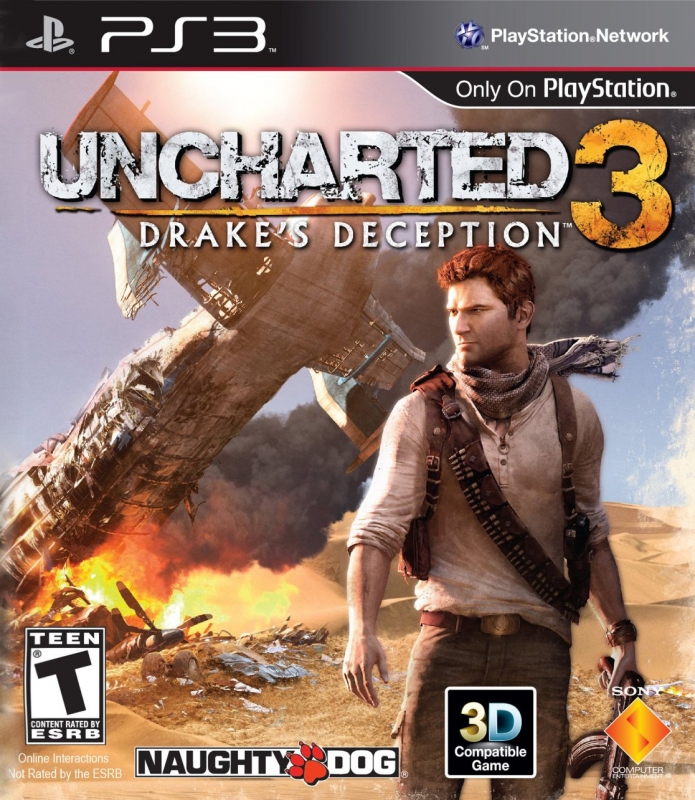

America - Front


America - Back

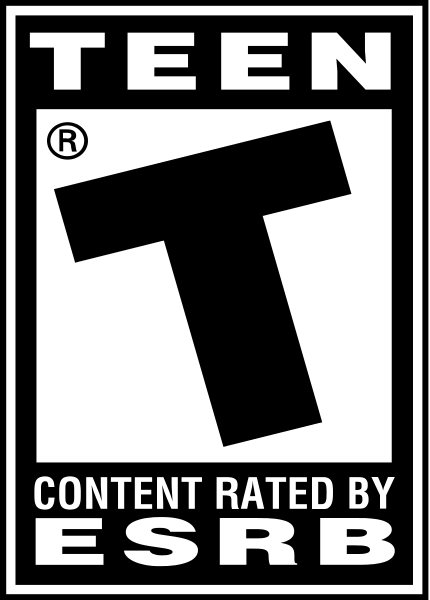
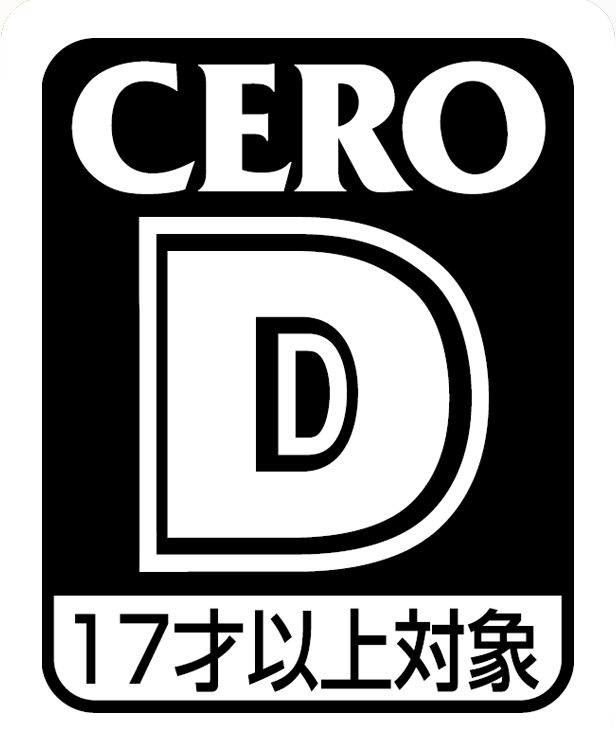
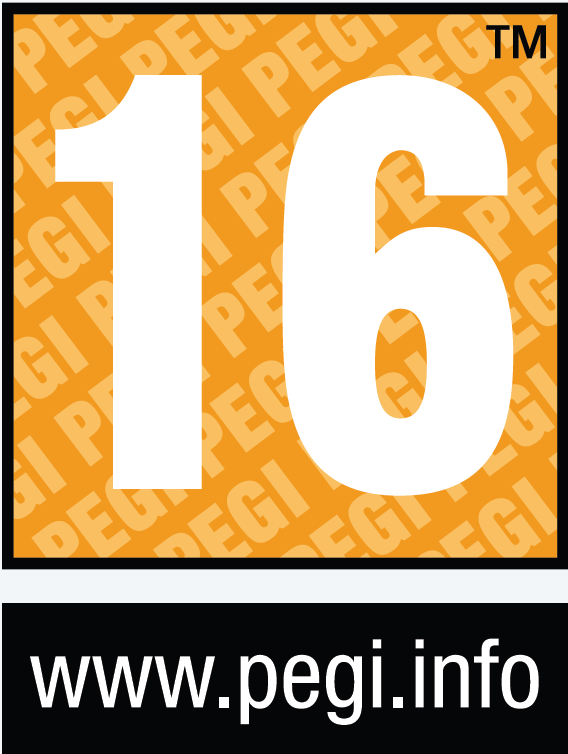
Uncharted 3: Sabaku ni Nemuru Atlantis
アンチャーテッド3 砂漠に眠るアトランティス
Naughty Dog
Action
 11/01/11 Sony Computer Entertainment
11/01/11 Sony Computer Entertainment  11/02/11 Sony Computer Entertainment
11/02/11 Sony Computer Entertainment  11/02/11 Sony Computer Entertainment
11/02/11 Sony Computer Entertainment
| Owners: | 773 | |
| Favorite: | 146 | |
| Tracked: | 47 | |
| Wishlist: | 103 | |
| Now Playing: | 52 | |
29th Mar 2018 | 2,401 views
So...this review's going to be one heck of a doozy. My continually-evolving-and-never-one-hundred-percent-final look at Uncharted 3 is going to be broken into two parts: the overarching spoiler-lite review I made in the past and a blog I wrote years later detailing my frustrations with the story as a whole (which'll be spoiler-heavy). Hope you enjoy!
---------------------------------------Review-----------------------------------------
*NOTE #1: While this doesn’t affect the overall outcome of any score, I will be cataloguing the GOTY/DLC additions in UC3.*
*NOTE #2: There are some story spoilers present in order to talk about certain qualities of the game I liked and disliked—more a mixture of both this time. Viewer discretion is advised.*
Second opinions can be a great or terrible thing. It’s something that has made me look at certain films, games, paintings, and more through a different lens and a different appreciation due to either someone else's explanation or a matured understanding of my own over time. When looking at Uncharted 3: Drake’s Deception from a distance the first time, the ambitions in storytelling, gameplay, and value was something that seemed to promise it would challenge its 200+ GOTY award-winning forebear. But through the perspective of being fresh off of replaying Uncharted 2, however, the more that grandeur looks like a mirage. Strange to say because in spite of admitting that I can still notice the building blocks here which could’ve lead to a more venerable outcome. Story molds are subverted as the narrative takes a heavier path and the design avoids repeat mistakes; but in the end, fundamental inconsistencies continually aggravate, like sand stuck in your shoes.
The story of Drake’s Deception draws upon T.E. Lawrence, also known as “Lawrence of Arabia,” and his archaeological days for inspiration. After fifteen years lying in wait, old enemies have appeared which hurtles Drake and his crew members, both old and new, to seek out the fabled Atlantis of the Sands.

What’s become a theme for the series, the overarching plot certainly shows a pastiche for both its predecessor and Indiana Jones, ‘The Last Crusade’ in this instance. This time though, the similarities are what I’d call a mirror image at times. This will probably sound familiar: flashback prompted after tutorial level, loosely-connected clues disinterred by Drake and co. only to be caught by surprise from adversaries, secret hidden away underneath a culturally-specific city, Drake’s displayed athleticism of jumping from a moving jeep to a larger moving vehicle, narrow escape of that larger moving vehicle’s destruction, attempting to survive against nature’s harshest elements, assistance from natives of the land, MacGuffin with a mystical result, and on and on. While this isn’t to suggest these are the ONLY plot points present, it’s tough not to notice that sort of template—exciting as it may be—to feel replicated too much here.
Though the point-for-point plot developments noted and locations may mirror past works, its own or its inspiration, Drake’s third outing still caused me to hanker over the subtle details more because of how willing it was to question Drake’s motives about this adventure and what he tries to accomplish altogether. Even from the lead female antagonist, Marlowe, early on she’s quick to point out the pleasure he gets out of it all. “Cerebral” would be the fitting term to use for what kind of a threat she’s meant to pose for Drake, as well her lead henchman Talbot to a certain extent.
What punctuates this heavier topic is in the likable duo’s camaraderie and origin story. Part of Drake’s Deception details Nathan and Sully’s past and what significance Sir Francis Drake had in shaping them today. Whereas past titles may employ those subtitles about its own tropes and questioning its character, its incorporation here is more powerful due to the character growth specifically for these two. From what was once just a cigar-chomping treasure-hunter without much of a history, Sully’s now portrayed as an adoptive father figure. By having that sort of a center within this sort of globe-trotting adventure, all the moments of admonition have a greater emotional weight.
With this sort of darker motif it’s easy to see what inevitable flaws can be overshadowed. I believe certain aspects are, but there’s oftentimes a sensation of hankering for a better story as time passes. This narrative can just seem desultory with its material at times and what they’re trying to go for with the villains. Despite the well-paced buildup, there are many small plot points or random pieces of information extolled here about the mystical qualities of Marlowe, Talbot, and their group that’s tossed out and just ignored. Part of why no development happens is because their presence is missed for a sizable part of the game. The reason Marlowe could be considered a more “cerebral” villain is because she only makes an appearance via voiceover narration in Drake’s head—which didn’t really make any sense—for that span of the narrative. While there is another antagonist encountered, this also greatly incommodes the story’s pacing and purpose.

In both interviews and within a behind-the-scenes video, Naughty Dog’s been adamant in admitting they construct their set pieces first and then wrap the story around it. This has never been more apparent than in the cruise ship level and the chapters leading up to it. What seems like a simple mission turns out to be a non-sequitur capped off with an eye-rolling dues ex machina. From the minor villain (with the silliest reasoning for motivation in this series yet) to its futility, the entire sequence is akin to a lengthy, spectacular detour after driving several hours down a road leading you to where you want to go. What hurts the worst is that the set piece moments stringed together there could be my favorite in the series thus far. It’s spectacular to play through that part! And to see such an obvious example of a narrative framework that’s purely in service of the action is rather disappointing.
Admittedly, this much negativity would be unfair of the story’s better qualities. As it’s been since the beginning, the developer’s yearning of encapsulating the zeal of old pulp magazines like Thrilling Wonder Stories. Even within this less-exciting material, that sort of passion is never lost. There’s also a new friendly side character (voiced by Graham McTavish) that has a good sense of humor and a set of unique flaws. Finally, something that’s continually bothered me with the series and its endings is handled much better and is more contextually fascinating when looking at the main villains and their deceptiveness.
Overall, Drake’s Deception plots out this middle ground between slinking away from its past structural faults to make something more ambitious while also diving into a few new problems of its own. With that considered, it’s still able to retain Naughty Dog’s avidity for cinematic storytelling. This is the most genuinely funny script so far, yet there’s also more to ponder; there’s heavier material, yet it never detracts from the enthusiastic adventuring. This narrative is possibly the farthest removed from consistent in comparison, but that doesn’t necessarily stop it from leaving indelible marks of excitement.
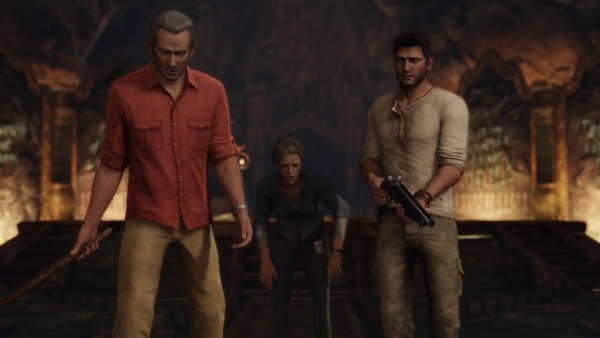
Encompassing that sense of adventure with such realized locales from Uncharted 2 has been reincorporated again with similar success. Even the same sort of picture of Drake dangling for dear life is now some sort of trademark for its marketing. It’s that captured moment causing anyone to ask “how the world did he get in such a situation?” that so encapsulates the excitement in these tales. And Naughty Dog, acting gleefully as ever, jumps to whip out one of Lawrence’s parchment maps and pound their fingers on various locations saying "here, here, and...here." Since we’re talking about a desert theme this time around, it’s natural to expect more of that sort of architecture and means of crossing these terrains to appear. Despite that, there are still ship graveyards, chateaus, and even English pubs throughout the journey. Just as it has been with ND’s previous, the punctiliousness the visual artists have in bringing these vistas to life is quite remarkable.
Building upon the technology of its predecessor, Drake’s Deception has some jaw-dropping visuals. Whether contesting against the forces of natures or being chased across rooftops, the action sequences can show great technical assiduity from the designers. Just as water and snow got their chance to show off the plethora of animations, the endless sandbanks are the character this time around. If there’s a takeaway on the side of the production that annoyed me it would be the sense of overproduction when considering the cut scenes. Since the team’s—unsurprisingly—going to push in-engine tech at all times, the difference between the characters’ details in cut scenes and gameplay is rather jarring this time around.
Audio design has definitely been another penchant for the series that remains one of its best qualities again. The most noted improvement is the satisfying sounds for guns. There’s a greater variety and they carry a greater heft. Greg Edmonson is back to once again compose the original soundtrack, but doesn’t quite reach what was accomplished in Uncharted 2. Of course, there are those euphonious Middle Eastern-inspired tunes that segue into the game at the right moments, but I suppose it didn’t hit me quite as well here. Still, the variety is great in capturing all the various locales, one score in particular remixing one of Uncharted 1’s tracks when on the cruise ship. It would only be apropos of me to sound like a broken record and praise the solid acting work in main and supporting characters. It’s a shame the script doesn’t give her the treatment a villain of her caliber deserves, but Rosalind Ayres’ performance of Marlowe captures her wickedness so well.
There’s also one annoyance tied between visual and audio that also resonates with certain aspects of gameplay: polish. One addition to animations is context-sensitive moments by Drake when close to walls or other objects (like Assassin’s Creed did with crowds). While this does fit in naturally quite often, there’s sometimes an impression of instability or it can just act wonky at times during combat with Drake reaching out and touching invisible walls. Audio bugs seem more consistent with even one portion, in-game and cutscene, which seemed to keep cutting out. These problems aren’t intended to say this is an unpolished game, only to say there is a notable disparity between how meticulous the predecessor was to this one.
Like the story complaints, gameplay is the other aspect where second opinions invaded so much of the experience. The lasting impression just hit me like a truck. When considering the awesome potential, it almost doesn’t make sense why the final result ended up this way. Were I to see the entire setup, beginning to end, of the campaign’s structure on paper it would feel like a proper step up from its predecessor: the waves of enemies mentality is pared down for the most part, proper emphasis on each individual element, and more. Sadly, it doesn’t quite come together.

The big culprit on “where it all went wrong” would be the greatest facet in its panoply of mechanics: shooting. When looking solely at the kinaesthetics of aiming down sight and movement, it feels so jagged—even with sensitivity cranked up. Unbelievable to see the previous template that felt taut and perfectly fine of being replicated here uses a different set of systems that aren’t nearly as satisfying. This coupled with the less-sentient enemy AI makes the ebb-‘n-flow of combat scenarios feel inconsistent. There are moments of such erratic behavior that I was left saying “wow…how were these things not addressed?” when enemies would make absurd, suicidal decisions in attempting to flank. Even a small cadre of pirates in this one combat arena became entirely unresponsive until I began shooting at them.
These problems are a shame to admit because other elements do bolster the enjoyment of shooting. For starters, the unsurprisingly new set of enemies towards the end feel like a quick in-and-out affair. While the mystical aspects never really seem like the highest points in the campaigns, their presence to the story and gameplay felt appropriate enough here to seem like a good threat but also quick enough to get the action back on track. The other compliment is tied to the technology. Combat arenas based on floating water platforms are some of the most exciting parts of the game. Since the ocean is thrashing waves every which way, there are momentary instances of sneaking in shots at enemies behind cover. It’s a small touch but one that’s catches my attention because it’s finding another way for technology to go beyond the looks and make the gameplay more engaging. Other minor improvements such as Drake’s being able to throw back grenades were nice changes as well.
Complementing Drake’s arsenal of weapons during combat is his fists and intuition. When it comes to hand-to-hand combat, the stronger emphasis and added abilities bolster the variety. These fun bouts of action are shown off in the most-fitting incipient stage. From the slow, perfectly-edited build up in the cut scene (even the damn inclusion of a red telephone booth!) to the atmosphere, the brawling at a London pub felt like a great way to open the game. Uncharted 2’s in medias res opening may never be topped, but this is still a great way to communicate the newfound emphasis in this particular mechanic. While the mechanic in isolation doesn’t stand up to titles like the Arkham games, the expanded amount of counters and surprising amount of environmental background to use against enemies only furthers Uncharted’s Hollywood-style kineticism.
Stealth gameplay is still present to the same degree, only without a lackluster mission dedicated to it. What makes it more engaging, or less annoying I should say, is that the setup feels nonchalant. While it’s still encouraged, there are never any moments that artificially feel as if the game’s systems now demand me to start shooting. No, you just use it to find an advantageous position, soften up the number of guards, and there’s nothing else to it.
Platforming is in keeping with what’s been accomplished before already. The specificity of color subtly pointing out climbable objects, the distanced camera angles creating excitement of what lies at the top and the plethora of vicarious walls to climb all remain intact. One interesting nuance here is the combination of platforming and vertical cover shooting a la Dark Void. Like with the platforming improvements in Uncharted 2, the vertical shooting does actually blend well with the architecture.

The collection of puzzles in Drake’s Deception is the best in the series so far. The reason these were more interesting was their lesser dependency of having to be grand in scale every time and never came off as feeling like filler. There’s no getting around the “Press Select for answers” complaint but these cases simply felt more inspired. Even the best puzzle presents only part of the answer in a clever way. In fact, I’d implore any new players to turn off the hint system for the chateau section just to see how the environmental design is used in tandem with Drake’s journal. A solid appetizer all around this time.
What makes the gameplay’s outcome so disappointing is in the wasted potential. Throughout each complimentary aspect to this multifarious collection, there’s some sort of nuance or an annoyance pared down. It shows signs of the team asking what few things didn’t quite work as before. Replaced by that, however, the basis of the combat simply feeling lesser and unfinished in some respects.
One of the best qualities in the last Uncharted was the greatly increased value for the sixty-dollar product—not to suggest single-player should only be considered a degrade by default. Here, the same energy has remained mostly intact. The campaign drops back down to the eight-hour mark, but being mindful of the smoother gameplay pacing and muted necessity of waves of enemies makes it understandable, appreciated even. What is strange is how the extras for the campaign are handled. Concepts and developer videos are tied to progress instead of in-game purchases. And there are oddly no silly extras like Doughnut Drake, No Gravity, Next Gen Filters, and the like to be unlocked from the now-missing in-game campaign store. It’s just the single-player mode and the collectibles to find for trophies.
Of course, those kinds of superfluous extras don’t make or break the main course meal. It’s about that value within the action and character-driven moments. But even then, absolute recommendation is a bit wavering here. Speaking solely from the technological and creative perspective, I would’ve hated to have missed everything involved with the cruise ship segment. Yet when looking at the whole and the stumbling blocks from both a gameplay and contextual mindset (i.e. the glue that made many action sequences feel so involving), it’s easy to see a greater inconsistency.
Whereas Uncharted 2’s multiplayer felt like a very beefy attachment with the campaign, it’s apparent much more was spent on providing a more impressive collection of options—for better or worse. Naughty Dog themselves even mentioned wanting this to be the “go-to multiplayer game” for the PS3. While it certainly has a multitudinous amount of features to back up that claim, its desperation of emulating so many other reward-based systems out there doesn’t always work out.
Co-op would be the better of the bunch since it’s been well-expanded. The expected Horde Mode variant returns, but with an interesting twist. Rather than selecting which type of Arena game style to choose from, Siege, Survival, or Gold Rush, this time all are mixed together and alternate after rounds. That sort of inspiration from Killzone 2 does a lot to keep your interest rather than being disappointed when your teammates may have voted for the Survival gametype again in Uncharted 2. Added on top of that is a new mode called Co-op Hunter Arena. Here, two teams of two fights to score three different treasures in three different chests, one team as heroes and one as villains. The catch is Villains mimic AI enemies and their arsenal while Heroes can use medals (through kills, pickups, etc.) to acquire better weapon classes. It’s one of the best surprises to the multiplayer overall. On top of those, Co-op Adventure, previously called Objective, makes its return and bolsters the amount of raw content found.
In regards to DLC, there are two additions: an extra Fort Adventure challenge, which brings a bit of nostalgia, and Co-op Shade Survival. The new Shade Survival mode operates like Arena but the objectives are centered on these mystical enemies. This would be the least enjoyable of the bunch because the enemies’ health is ridiculously high and they’re annoying combatants. Avoid extra purchase of that particular mode.
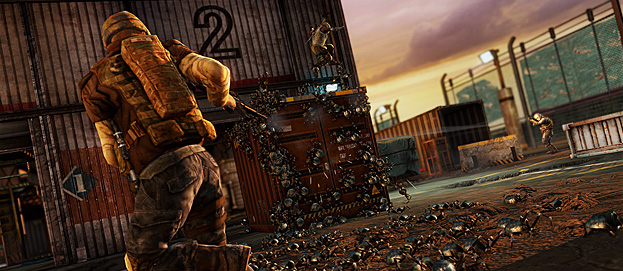
The competitive has, unfortunately, dipped down when it comes to consistent quality. Yes, all the different deathmatch and objective variants are here and the connectivity runs just as smoothly as Uncharted 2. While most of my time has been spent with the recent version (1.14._____), I don’t recall many technical problems first playing in ’11 either. Disregarding all later-released DLC maps, Drake’s Deception shipped with eight maps. What made the number absolutely no big deal in UC2 to me was the awesome quality in three-fourths of those maps. Sure, I didn’t care for two of them. But in this case? There’s not that same level of fervor for them altogether. That isn’t to say that they’re “dreadful” just that it’s rather telling how my votes typically strayed towards the UC2 remade and flashback maps instead. There is one thing to say about the potential of the included cinematics for certain maps. Take Airstrip for instance: beginning on a runway with one team spawning inside a carrier jet and the other on large trucks surrounding it on three sides and then a cinematic cutscene happens to place both teams on a typical map. This sort of yearning for that dynamism Uncharted 2 harnessed so well and were given a taste of with dynamic events in its competitive multiplayer really has potential to wow in the same way as the campaigns.
The persistent reward system has received a number of tweaks now. Along with gaining experience points to attain a higher level, money is also given for you to select new character customization options, mods for weapons, boosters, and medal kickbacks. Kickbacks act as a sort of temporary enhancement that’s acquired after collecting a certain number of medals in a match, whether it’s a random pickup, objective based, or whatnot. Some abilities are just simple rewards like an RPG or instantly teleporting to another part of the map. Character customization gets a grand overhaul with being able to change colors of clothing, get random accessories (like Jak’s goggles), and more.
There’s other miscellanea added to the mix like emblem editors, expanded cinema mode, and Uncharted TV. Anyone who’s messed with emblems before will be familiar with this setup: having a plethora of decals and a couple layers to rotate and such. A fluffy extra but pretty interesting to see those decal splashed on various walls throughout the match. Cinema mode is easier to use and enables direct uploads to players’ Facebook and/or Youtube accounts. The Youtube dedicated channel Uncharted TV is also a very neat extra that filters the best user videos and has them playing at the bottom right of multiplayer menu. It’s a really great extra that’ll sometimes show off tips for new players or great montages.
With all this considered one could ask where it goes wrong. The answer: the very fundamentals don’t quite sit well with me. It makes sense: if the shooting mechanics are disappointing in the campaign they won’t feel much better here. But instead of the typical agents and pirates that (finally) went down easy, players here take an absurd amount to kill with anything other than snipers or shotguns. The balance of how effective each weapon works doesn’t make sense. In also trying to replicate Call of Duty’ s ideas with many boosters having levels now and more, there’s a sense of nuance lost. The simpler route in Uncharted 2 felt more fluid and exciting whereas here it’s bloated and a bit banal. And we haven’t even touched on the microtransactions! I’m sorry but when you have that stupid shopping cart logo blinking for all the various icons you haven’t unlocked at your level it can become too much. Not to forget, various head ornaments that give ability boosters.
It stinks to be a bit underwhelmed by the online as a whole because there’s truly a tremendous amount of new ideas shown here. Some of the ideas with co-op are very interesting; extras like Uncharted TV seem like a solid community-oriented novelty; and furthering that movie feeling into multiplayer continues to improve. Despite complaints, the amount of stuff that kept me engaged still makes these multiplayer offerings good fun.
“Deception” seems like a fitting word when revisiting the Rub ‘al Khali depicted here. What once held firm as an incremental improvement over Uncharted 2 to me, this forerunner falters on many of its own mistakes. When solely looking at what it was capable of accomplishing, this would’ve been the better game. Focusing on Drake’s past and questioning what drives him, a more evenly-distributed focus on mechanics, and even more exciting blockbuster moments are just some of the ways it may have added more substance to Among Thieves’ flash. But alas it doesn’t always go according to plan. It goes to show that exciting the player in this series is built upon making these scenes flow naturally instead of feeling like prerequisites.
coolbeans’ *FresH* Badge
------------------------------------------Blog-----------------------------------------
*NOTE: MAJOR SPOILERS of Uncharted 2 and 3 will be brought up.*
With the mainline Uncharted Quadrilogy set to cap off this month with A Thief’s End, I figured now would be a good time to revisit what’s most likely the 7th gen’s most-awarded action-adventure series. As I’ve made known in the past, the only one I’d consider to be close to deserving all of its unremitting praise would be Uncharted 2: Among Thieves. But it wasn’t always like that. Even in my Uncharted 3: Drake’s Deception review I was open about how much I enjoyed it years earlier. The melding of creative set pieces and high production values just engulfed me in this stupor, I guess. But it seems like the more I think about the storytelling flaws in UC3 the more I’m left wondering if my moderately respectable score was still being too nice to it—a feeling that also extends to the first Uncharted from time to time. While it still polished up the template in respect to game design and co-op multiplayer, I wanted to focus on why I think UC3’s story lacks the punch of its predecessor beyond a surface-level ‘wow factor’ for its time.
One integral quality linear titles like Uncharted need to nail is the pacing. While a globe-trotting adventure provides ample opportunity for different gameplay scenarios, the writing has to make sure these heavily-constructed action moments feel as though they’re naturally unfolding for the player lest they lose their immersion. Half-Life 2 would be a good example of meshing narrative and level design in a cohesive way that kept up this disguise throughout. And Naughty Dog’s been pretty adamant to admit they think of their set pieces first then tailor the story AROUND the experience. And while they did a good job of masking it in the first two Uncharted games, Drake’s Deception is a much sloppier attempt.
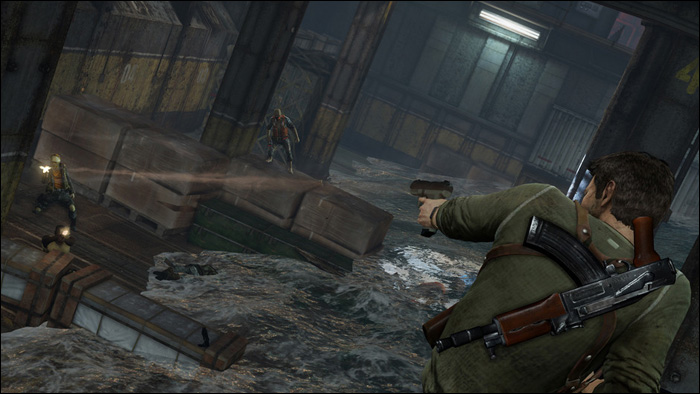
One of the worst signs of this—unfortunately—comes from its own ambition: having this globe-trotting adventure cut to so many different settings at a dizzying rate. While I still absolutely admire that kind of enthusiasm to make such a sweeping adventure, it’s tough to deny just how jarring it felt to the story’s flow. Start off in a bar fight in England, now let’s jump twenty years in the past, then to some jungle chateau in France, afterwards to a nighttime mission in Syria, and on and on and on. It felt like Naughty Dog lapping up the praise of UC2’s setpieces and having the writing excuse away these abrupt setting-jumps. Uncharted 1 and 2 only made a couple of such jumps during the opening hours. Once Drake got on the island in Drake’s Fortune and Nepal in Among Thieves, from then on we’re experiencing everything that our protagonist was until the end. I think my case is further-bolstered when considering the ship graveyard and cruise ship sections which take up about one-and-a-half hours of time yet does absolutely nothing to move the plot forward; that’s not to mention the preposterous deus ex machina of Drake winding right back onto Yemen’s shoreline and eventually into Chloe’s hotel room to get the main plot going again.
Or what about when Drake’s fighting for his very survival in the desert? After being on the teetering edge of death whilst stuck in the middle of the desert, Drake happens upon a ghost town in which Marlowe’s gang is also located. What does Drake do after barely making it out of these gunfights alive? Just get some quick R&R for the night and then we’re back in the thick of it. UC2 handled this much better. After barely surviving the frozen tundra, the cutscenes and game make it quite clear that Drake’s still beat up from the events that occurred a few days ago; the resulting gameplay after the destroyed train segment has the player exploring a safe environment for a while and then we’re eased back into the action with easygoing platforming and puzzling. It was an effective way of reinforcing Drake’s debilitation through gameplay following the intense events that nearly got him killed.
UC3’s also one of those few times I’ve pondered whether it’s possible for a series to plagiarize its own material. And while I do my best to avoid considering such a severe accusation outright, there’s legitimate grounds to at least present that kind of a question here. I’ll list some plot points and scenarios and you tell me if this sounds familiar:
-Flashback prompted after the first mission
-Trip to a jungle location which reveals some clues of x/y MacGuffin, shortly thereafter being cornered by the bad guys and forced to make a desperate escape
-Bonus: previous party member(s) decide to just up and leave with a lazy reason thrown in
-Nathan & Co. make their way to the next clue somewhere underground in the middle of a big city; on their way back out they’re cornered by the antagonist’s henchmen
-Nathan and Elena sneak into a depot which results in Nate leaping from a Jeep onto an accelerating vehicle that’s about to get away
-Fighting ensues on this moving vehicle which eventually results in Nate barely escaping from the destruction of said vehicle
-He’s then forced to fight against both the natural elements and some henchmen before a native/natives of the area come to his aid
-After getting his bearings, Nathan’s then forced to jump between a convoy of trucks that’ll eventually lead him to The Lost City
-Within the heart of The Lost City lies the truth about x/y MacGuffin which led to the demise of its own people, and one which the main villain(s) wish to utilize to their own evil ends
-Our heroes thwart the villain’s/villains’ plans and have to escape while ancient ruins are crumbling all around them.
Of course, this isn’t a point-for-point rehashing of EVERYTHING in UC2; however, there comes a point where one can’t help but feel this was a team resting on their laurels.
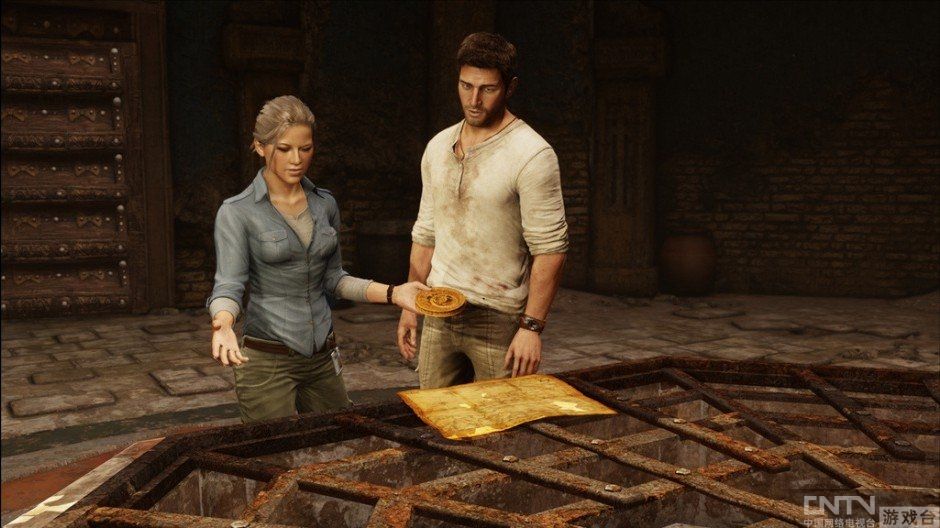
My last focal point rests against the antagonists here, primary and secondary. The easiest to take down would be the random pirate boss in the middle of the game. I mean…what purpose is served in lying about having Sully only to turn around and try to ditch Drake, your best shot in getting to Iram of the Pillars, back at the ship graveyard? That’s certainly not the best method of baiting your only tangible link to this supposed treasure you want. And having your character excuse his stupid, movie-gag ruse as “Eh…I’m a pirate, after all!” is just lazy. This sort of inconsistent behavior also extends to Marlowe and Talbot, the two key villains.
A part of me respects where the writing staff were trying to go with this duo. Before release, ND personified Marlowe as more of a “cerebral” villain. They wanted to branch beyond the more standard, clichéd archetypes of previous Uncharted games; however, the result for both is a lack of clear vision. With Marlowe: she never stood on firm ground as to whether or not she wanted to be a more direct or indirect threat. She has her henchman that are more than willing to kill Drake in gameplay yet she got angry at Cutter giving the believable appearance of killing him and Sully in cold blood. She’ll also sit down and talk with Drake in order to intimidate him for one moment, then simply leave him for the pirate boss to handle despite stating he’s “no longer part of the equation” after capturing his necklace. Now compare that to Lazarevic. Within each face-to-face meeting with him, Drake knows this guy’s willing to kill innocents in order to attain his goal. Simplistic moustache-twirling done really effectively. The guy means business but he’s also not above theatrics to mess with our protagonist’s head like when he wanted Drake to choose which of his flames would live or die.
Talbot…is another can of worms altogether. In the moment, he seems like a cool second-in-command type of guy. Yet when you start to think more about him, there’s really no explanation given as to how he’s able to magically know Drake’s exact whereabouts so often and, almost magically, teleport in and out of said locations. Judging by the plethora of confused players which Amy Henning had to directly address it seems I’m not alone. And while some credit can be given to her providing perspective, we shouldn’t ignore this dictum: you’ve failed as a writer (in this instance) if such simple stuff couldn’t be communicated through the game. It feels similar to the cut content of Heavy Rain shown on YouTube back in the day. It provided more dimension to Ethan’s mental state but I had to research beyond the game itself just to get some kind of an answer. Now back to UC3. When considering Talbot’s disappearing acts, the brainwashing dart, the sort of cult he was a part of, and the Tarot Cards in the background having some kind of symbolism, I was legitimately curious as to whether or not he’d be revealed as some supernatural enemy at the end. The final hour could’ve been centered on him and utilized in a more creative way rather than being just another fist-fight and shooting bit. And notice the plot hole at the end with him previously getting shot in the arm yet is able to lift a big rock clear above his head when he’s trying to crush Sully.
Once again, let’s compare that rushed final boss to Lazarevic. Now I’m not the biggest fan of the execution with UC2’s final fight, namely because the shooting mechanics don’t congeal with a run-n-gun mindset very well; despite that, it’s clear some thought went into it from an on-paper perspective. After becoming used to stop-n-pop third-person shooting for most of the game, Drake’s in a more desperate role of having to stay on his toes at all times while shooting explosive blue resin to chip away at Lazarevic’s health. This gameplay framework meshes perfectly with the themes of the overarching story as Drake’s now in a more submissive position pitted against a tyrannical warlord who just imbibed some mystical elixir before the fight. It’s a wits vs. brawn fight that’s contextualized through gameplay.
Talbot’s inconsistency is also highlighted by one of the game’s big setpieces. Within the first half of the game it’s been established that he’s a skilled marksman, a solid tactician, and knows the art of deception. Despite previously shown as being fearless, even in the midst of killer spiders, there comes a moment where he’s being chased by an unarmed Drake. I mean…what? Drake simply flipping over a table and running at him is his ultimate fear or something? It makes no sense for his character to let Drake give chase to him but to also run AWAY from his own team who would’ve helped him. What could possibly account for this erratic change in behavior, you ask? In one of Uncharted 3’s own documentary videos, one of the developers talked about having this chase scene for about a year without knowing whom Drake would be chasing; so the writer’s just put Talbot in there because they HAD to have the level. This is the kind of mindset that worms its way into many setpieces here: compromising character motivations and plot in obsequious service to the action.
Does this mean I totally hate the game now? No. These are just some extended thoughts I’ve had on the game since reviewing it. While my score reflected it as being akin to a three-star blockbuster movie (7.5), the more I consider its narrative the more I’ve wondered if perhaps UC3’s closer to two-star quality. Now there’s obviously some great aspects about the script I’ve mentioned before and still stand by, but there’s something about these flaws that’ve gnawed at me for a while. It’s probably not helped when I see some of its past accolades such as Best Video Game Writing for 2011 from The Writer’s Guild of America.
It’d be fair to bring up the terrible vetting process this writer’s guild seems to have, especially when the likes of Brink can even get nominated, but this kind of praise didn’t just stop here. It received both other story awards and its narrative was constantly mentioned as a reason that it won Game of the Year from various outlets. That bothers me. I feel like fans and critics alike can have a nasty habit of just letting these kinds of handouts slide only because of who’s behind the game rather than assessing its inherent quality. It’s a cycle where certain developers can just pay lip service to how meaningful their stories are and hype gets the better of everyone—myself included. It’d be nice for us be a better kind of fan to these developers: the type that doesn’t pull any punches instead of showering them with constant adoration for whatever they decide to ship.
|
|
|
|
|
|
|
|
|
|
|
|
|
|
WebMasterFlex
posted 03/07/2013, 03:14
U2 and U3 will do 7 million lifetime. Hope TLOU could do the same.... Message | Report |
|
|
Heavenly_King
posted 27/06/2013, 04:10
This game is going to reach U2 numbers soon. AWESOME!!! Message | Report |